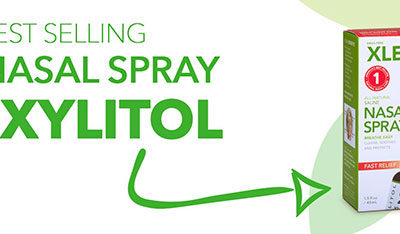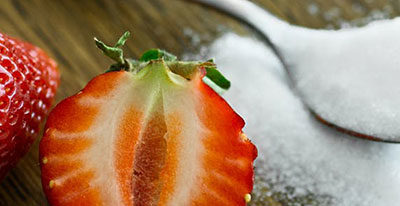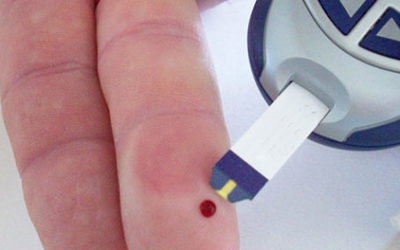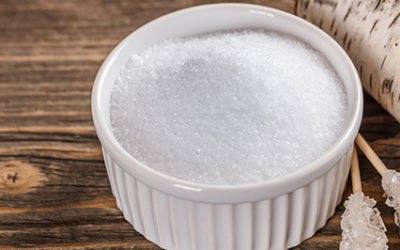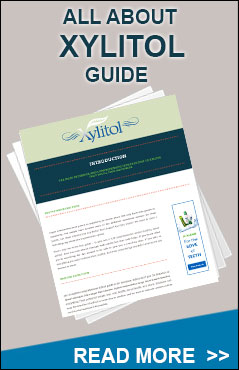Publication: IPCS Inchem
Read original study here.
XYLITOL
Explanation
Toxicological monographs were issued in 1977 and 1978 (see Annex I, Refs. 44 and 49). Since the previous evaluation, additional data have become available and are summarized and discussed in the following monograph.
BIOLOGICAL DATA
BIOCHEMICAL ASPECTS
Absorption, distribution and excretion
Sixty Wistar albino rats were gradually adapted to 20% dietary xylitol. Fully adapted and control rats were fasted overnight and dosed by oral intubation with 5 µCi of U-14C xylitol, U-14C sorbitol or 1-14C mannitol. Each isotope dose was mixed with corresponding (“cold”) polyol to obtain a final dose of 0.625 g/kg bw. Tail vein blood samples were obtained and counted. In several experiments 0.5 mol of calcium were given together with xylitol.
Xylitol adapted rats did not exhibit diarrhoea following the dose administration. There was a significant increase in peak xylitol blood levels as determined by radioactivity in xylitol adapted rats as compared to controls. Xylitol adaptation also enhanced sorbitol and mannitol absorption when compared to controls. Calcium caused an initial rise in blood levels of radioactivity but the effect was not statistically significant (Salminen, 1982).
Pig
Six male castrated pigs (39-75 kg weight range) were subjected to feeding trials based on a Latin square design with either a polyol mixture (a by-product of xylitol production containing xylane) or xylitol supplementations. The transition period between diets was five days, preliminary period seven days, and collection period seven days (seven days feeding per diet). The basic diet consisted of skim milk powder with minerals and vitamins, to which polyol mixture (levels of 5 or 2.5% dry matter) or xylitol (2.5 or 5% dry matter) were added. Wheat starch (5.0 or 2.5%) served as control supplement. Faeces and urine were collected twice a day and frozen until analysed. Venous blood samples were obtained one, two, or four hours after feeding. Glucose, plasma insulin and various clinical chemical parameters were determined.
There was a slight decrease in the nitrogen balance of diets supplemented with 10% of polyol mixture or 5% of xylitol. There was no detectable xylitol or sugar alcohol in the faeces; a small quantity of xylitol was found in the urine of pigs when fed polyol mixture but not when fed xylitol. There was a significant rise in plasma glucose levels in xylitol fed pigs. Urine N decreased slightly in polyol or xylitol fed animals. Albumin concentration was significantly raised. There were increases in plasma alanine and asparate transferases (transaminases) (ALAT and ASAT also called serum glutamic pyruvic and glutamic-oxaloacetic transaminases (SGPT and SGOT)).
The ALAT and SGPT levels increased significantly in a dose-related manner and indicated possible liver toxicity. Only the high dose level was statistically significantly different from the control.
There were increases in insulin concentrations following xylitol feeding, and values two hours after feeding were higher than control levels. This increase was also dose-related. The peak of insulin levels was between 40-60 minutes after feeding (Nasa & Tanhuanpaa, 1981).
Metabolism
Wistar albino rats were either adapted to 20% xylitol diets or given a 20% xylitol diet without adaptation or given a control diet. These rats were placed in individual metabolism cages, and urine and faecal samples collected. Body weight and levels of urinary pH, sodium, potassium, calcium, and oxalic acid were determined. Weight gains of non-adapted rats were smaller than those of adapted or control rats. Urinary output of non-adapted rats was decreased initially, but when diarrhoea disappeared the urinary volume returned to the control range. Urinary pH was somewhat reduced. Urine osmolality was decreased in xylitol treated rats. Higher net stool weight was seen in both dietary groups.
Excretion of Calcium was significantly increased in xylitol treated rats. A smaller increase was seen with sodium excretion
(Salminen, 1982).
Metabolism in diabetic versus normal rats
The effect of xylitol in Long-Evans rats was compared to fructose, glucose or no carbohydrate supplement on levels of ascorbic acid, ketonic metabolites and certain serum hormones in the normal and streptozotocin-diabetic state. Liver glycogen levels were determined. The livers of rats not treated with streptozotocin, glucose or xylitol (4% dietary level) contained significantly smaller glycogen levels than fructose or control groups. In xylitol treated rats, serum insulin levels were slightly decreased as compared to controls and serum glucagon was markedly depressed as compared to the other groups.
The liver total ascorbic acid concentrations in untreated rats were significantly smaller than in fructose or xylitol fed rats. Rendering the rats diabetic with streptozotocin produced similar metabolic consequences regardless of dietary carbohydrates tested. The above result is in contrast with previously observed antiketogenic effects of fructose and xylitol (Hamalainen & Makinen, 1982).
TOXICOLOGICAL STUDIES
Special studies on the occurrence of adrenal medullary hyper and neoplasia in diets containing xylitol
Rat
A review of the available adrenal sections from a two-year toxicity study in rats (Hunter et al., 1978) was carried out. Additional sections were also cut from stored paraffin blocks. It was concluded that xylitol caused a significant increase in the incidence of adrenal medullary hyperplasia in male and female rats in all dose levels tested (5%, 10% and 20%). There was an increased incidence of pheochromocytomas (diagnosed on the basis of morphological but not functional effects) in males and females in the 20% xylitol group. However, this increase was not statistically significant. No pheochromocytomas were diagnosed at the lower levels. Similar effects were observed in rats fed comparable levels of sorbitol (Russfield, 1981).
A study was carried out to determine if the diagnostic criteria used in human pathology were also applicable for the diagnosis of pheochromocytomas in rats. In this study, groups of 100 and 200 male Wistar rats were used. The animals were maintained on standard stock diet. The first group of 100 was sacrificed at 24 months, and the second group of 200 at 30 months. Systolic blood pressure was measured in rats group 1 at age 22-23 months, and in group 2 at an age of 27-28 months. Two weeks later, three-day urine samples were taken and analysed from creatinine as well as 4-hydroxy-3-methoxy mandilic acid (VMA – the major metabolite of both adrenaline and non-adrenaline in man) and 4-hydroxy-3-methoxyphenylglycol (MHPG) – the principal catecholamine metabolite in rats. Surviving rats were sacrificed at 24 and 30 months of age (group 1 = 70 animals, group 2 = 45 animals), and autopsied. Adrenals of animals dying before sacrifice were also examined. In addition to the normal microscopic examination, the adrenals were examined histochemically for the presence of catecholamine-containing granules. Neither elevations in the measurement of blood pressure nor the excretion of VMA and MHPG revealed the presence of pheochromocytoma of the adrenal medulla. Hyperplastic and neoplastic lesions showed little or no chromaffinity. These data show a lack of functionality of the tumours (Bosland & Baer, 1981).
A recent literature review of pheochromocytomas in rats indicates that the tumour is not unusual for the species, and that the nature of the diet, cage conditions, and hormone imbalance may affect the prevalence, which may be quite variable even within a specific strain (Cheng, 1980).
Statistical re-evaluation of a two-year dog study
A statistical re-evaluation was carried out on xylitol versus control groups in the chronic feeding study in dogs. The major findings in the feeding study were increased liver weight, a rarefied appearance of periportal hepatocytes in some of the treated dogs, and an increased group mean values of serum enzymes including SGOT, LDH, SAP and SGPT, as well as serum protein, serum albumin and cholesterol (Heywood et al., 1981). The re-evaluation demonstrated that liver weights were not significantly increased in xylitol-treated animals in either the combined male and female data or when the sexes are analysed separately. A minimum effect was observed at the 20% levels for males. Total serum protein, serum albumin, SGOT, LDH and cholesterol did not show a significant difference between groups that could be related to treatment. Although group mean SAP and SGPT levels in the 20% xylitol group showed a trend towards minimal increases from weeks 12 to 46 and from weeks 25 to 100, respectively, individual increases of enzyme levels above normal range contributed to this observation. However, these changes were not persistent, progressive or systematic. The histological changes reported (rarefied appearance of periportal hepatocytes) in a proportion of the dogs receiving 10% or 20% xylitol for two years, was also reported in all other treatment groups (Bär & Christeller, 1980).
Comments on the statistical re-evaluation provided an additional analysis of the statistical method used for re-evaluation. It was concluded that there was a significant difference between the liver weights of the animals in the 20% xylitol and 20% starch group. There was no evidence for a treatment-related progressive shift to abnormal values for total serum protein and serum albumin. There was agreement with the analysis used for evaluating serum levels for liver enzymes, but it was pointed out that because of the erratic fluctuations in levels shown by some animals in all treatment groups it was difficult to provide a coherent interpretation of these data. Finally, there was no evidence of a relationship between the parameters considered when this is looked for within treatment groups, but there is some evidence for a relationship between SGPT and the rarefied appearance of periportal hepatocytes when the differences between treatment groups are taken into account (Chanter, 1981).
In another report commenting on the hepatic changes observed in the two-year xylitol Study in the dog, it was stated that a rarefied appearance and occasional slight enlargement of periportal hepatocytes was observed in 3/12 dogs in the 10% xylitol group, and in 5/12 dogs in the 20% xylitol group. There was no evidence of necrosis or degeneration of the liver cells. It was concluded that glycogen accumulation as indicated by electron microscopy in slightly enlarged periportal hepatocytes was associated with the marginal liver weight increase, and that the enzyme leakage was due to altered membrane permeability of the distended cell (Prentice, 1980).
Special studies on the effects of caecal flora
Wistar albino rats were either fed a control diet or adapted to 20% xylitol. The ability of caecal suspensions from control and xylitol adapted rats to metabolize xylitol was assessed by determination of xylitol concentration and pH changes.
The adaptation to 20% dietary xylitol increased the ability of caecal flora preparations to utilize xylitol in vitro as the sole carbon source; this was principally seen among anaerobic bacteria. Aerobic incubations with xylitol as the sole carbon source did not appear to promote acid production whereas aerobic incubations of these preparations with glucose resulted in rapid acid production (Salminen, 1982).
Faecal samples of control, xylitol (20% diet) adapted rats or rats receiving 20% xylitol, without prior adaptation, were collected and homogenized with deaerated Ringer’s medium. A 20% suspension was centrifuged and standard loopfuls of caecal suspensions were heat fixed and stained. The relative amounts of Gram positive and Gram negative bacteria were estimated. The dry weight and moisture content of faeces were determined. Anaerobic organisms were isolated in stored media. Xylitol was determined by high pressure liquid chromatography.
There was an initial decrease in pH of faeces when dietary xylitol was fed to unadapted rats, but the pH returned to normal during the adaptation period. The gradual adaptation was associated with a gradual increase in the relative proportion of Gram positive bacteria from 25 to 30% of faecal bacteria count to 70% when fully adapted. There was a statistically significant decrease in the numbers of aerobic streptococci.
To investigate the cause of xylitol induced dose-related diarrhoea, caecal bacterial flora were investigated. Using a rapid and sensitive radioisotope bioassay, in which14CO2 production from i.v.-14C labelled xylitol was measured, it was possible to show that caecal microflora obtained from rats can metabolize xylitol. This activity was increased 10-, 15-, 30- and 40-fold in caecal flora taken from rats fed diets containing 2, 5, 5, 10 and 20% xylitol respectively (Krishnan et al., 1980 a,b).
Special studies on oxalate formation and metabolism
Oxalate formation – mice
Twelve groups of 8 BLU-HA male weanling mice received one of six different dietary levels of xylitol (0, 10, 12.5, 17.5 and 20%) with (20%) or without (O) fructose at each xylitol level. The mice were adapted to the xylitol diets by daily increment of 2.5% each day until the specified level was reached. The mice were sacrificed after 22 days of feeding, and liver, brain, bladder, right kidney and right thigh muscle were collected.
The presence of xylitol in the diet resulted in a slight but significant increase in weight gain. Fructose had no effect on weight gain. There was a significant effect of xylitol on oxalate levels in brain and muscle but not in the liver. There was no consistent response of oxalate levels to xylitol dose. Fructose also had a significant effect on brain and muscle oxalate levels, but again there was no consistent trend. Less than half of the kidney samples had measurable levels of oxalate and none of the bladder samples had detectable levels of oxalate (1.0 µg/g wet weight) (Barngrover, 1982).
Metabolic study of oxalate formation in pyridoxine deficient mice
Five groups of four BLV/HA male weanling mice (initial weight of 10 g) were adapted to 10 or 20% xylitol administered in a semi-synthetic diet with glucose beginning at 5% xylitol level with 45% glucose and increasing the xylitol level by 5%, while decreasing glucose by 5% stepwise every other day until the desired xylitol dietary level was achieved. Two control groups received glucose only. Three of the groups received similar diets which were deficient in pyridoxine. The diets were fed for 25 days to establish a pyridoxine deficient condition; urine and faeces were collected for one week, and body weights were determined weekly. The mice were then sacrificed and the livers collected. The pyridoxine adequate group fed glucose only as a sugar source grew best (final mean weight 25 g). The three xylitol groups (10%, 20% dietary levels, pyridoxine deficient; 20% pyridoxine adequate) gained less weight and had approximately similar mean weights (20 g); the glucose, pyridoxine deficient group did not gain weight and had three deaths before the end of the study. The 20% xylitol, pyridoxine deficient group excreted the highest level of urinary oxalate, with the 10% xylitol deficient and 20% xylitol, pyridoxine adequate group excreting intermediate amounts and the glucose, pyridoxine adequate group the lowest levels, whereas the two groups fed 20% xylitol had higher urinary levels (Barngrover, 1982).
Oxalate formation – rats
Six groups of three Sprague-Dawley male weanling rats received semi-synthetic diets for 28 days; four of the groups were pyridoxine deficient. Diets contained either 50% glucose by weight or 30% glucose and 20% fructose. On day 28 the rats were injected three times at spaced intervals with either 15% glucose; 10% xylitol + 5% glucose; 15% fructose; or 10% xylitol + 5% fructose. Urine was collected on days 28 and 29 and rats were sacrificed and livers collected 30 minutes after a final injection on day 30.
The final body weights for the rats show that the group with the best growth received fructose + xylitol injections and was pyridoxine adequate (mean weight 216.6 g) versus the group receiving fructose + fructose injection (15%) and were pyridoxine deficient (119.7 g). The poorest growing groups received glucose diets only and either xylitol or glucose and glucose injections, and were pyridoxine deficient (107.1 g, 103.1 g).
The rats on the pyridoxine deficient diets tended to excrete more oxalate and have higher liver oxalate levels. Within the pyridoxine deficient group only, rats injected with xylitol tended to excrete more oxalate and have higher liver oxalate levels, but these differences were not significant. Fructose had no effect on oxalate excretion or liver oxalate levels in the rats injected with xylitol (Barngrover, 1982).
Special studies on reproduction
A three-generation reproduction study was conducted in NMRI mice. Initially groups of 12 females and three males were allocated to a control group and a group adapted to 20% xylitol. Diets and water were constantly available. Body weights were recorded weekly.
No abnormalities of condition or behaviour were observed in any of the successive generations of the control or xylitol treated groups. However, the body weights of xylitol treated animals at birth were decreased as compared to controls and significantly lower weight gains were observed in the Fo litters of xylitol fed animals. Even though the growth rates were lower in xylitol dosed litters, no significant differences were noted in food consumption after weaning. There were no significant differences in mean numbers of pups per litter. The mean birth weights were similar in both groups and minor variations were observed only in relation to litter size. No treatment related differences in mortality figures were observed during lactation periods. Gross examination revealed no abnormalities or differences attributable to xylitol treatment. Only slight increases in the caecum size were observed in xylitol treated mice (Salminen, 1982).
Special studies on the effect of xylitol on absorption and excretion of oxalic acid
Mouse
Male (30) and female (20) CD-1 mice were either gradually adapted to 20% xylitol diets or fed a control diet. After a 12-hour fast the mice received a single oral dose of 2 µCi of U14C-oxalic acid in water or in an xylitol solution (a total dose of 0.625 g/kg bw). For five xylitol adapted male mice the oxalic acid dose was given with sorbitol (0.625 g/kg bw) and for another group of five with mannitol (0.625 g/kg bw). Urine and faeces were collected at intervals for 72 hours to monitor the excretion of the label.
A similar study was conducted with 40 male and 40 female NMRI mice. In this study, samples of the intestine, kidney, liver and brain were also analysed for radioactivity.
Adaptation of male mice to 20% dietary xylitol increased the urinary excretion of the label fourfold (4.5 versus 20%). No major changes were seen in faecal excretion. Both sorbitol and mannitol increased the urinary excretion of the label while only sorbitol also affected faecal excretion of the label.
Urinary excretion of oxalic acid was significantly higher in xylitol adapted mice when compared to controls receiving oxalic acid only.
Even greater urinary recovery of label was observed in control mice receiving oxalic acid with xylitol. In female mice xylitol appeared to induce an even more pronounced increase in oxalic acid excretion (Salminen, 1982).
Rat
Diets containing 20% of xylitol or one of the following carbohydrates: glucose, fructose, sucrose, xylose, sorbitol or mannitol were fed to groups of five Wistar rats for seven days. The rats were fasted for 12 hours and given a 5 µCi dose of U14C-oxalic acid mixed with 0.625 g/kg of xylitol or respective carbohydrate. Urine and faeces were collected for 72 hours and counted for recovery of activity. Ten rats were gradually adapted to 20% xylitol diets. After a 12-hour fast these rats and 20 controls received 5 µCi of U14C-oxalic acid mixed with water only or together with 0.625 g/kg xylitol/body weight. Urine and faeces were collected from five rats/group; tail vein blood from the other rats at intervals up to 24 hours. Urinary excretion of the label was virtually identical in all groups. The mean excretion of label in faeces of control rats receiving oxalic acid was significantly lower (P <0.001) than in control rats receiving oxalate alone, or xylitol adapted rats receiving oxalate with xylitol (faecal recoveries were 77.8 and 83% respectively). The urinary excretion of label was also significantly higher among control rats receiving oxalate with xylitol when compared to control rats receiving oxalate alone. However, xylitol adapted rats excreted a significantly smaller proportion of oxalate in urine compared to controls receiving oxalate alone.
The mean plasma levels of radioactivity in control rats receiving oxalic acid with xylitol were significantly higher (P <0.05) immediately after the start of the study when compared to controls receiving oxalic acid with water only or xylitol adapted rats.
When samples of plasma, urine and faeces were analysed by use of thin layer chromatography, the major part of the radioactivity was recovered as oxalic acid (Salminen, 1982).
Acute oral toxicity
The acute oral toxicity of xylitol was determined in fasted NMRI mice in unadapted versus fully xylitol adapted mice (five mice/sex/dose group).
Toxic signs consisted of staggering gait and a prone position. Slight diarrhoea was noted in adapted mice as compared to extensive diarrhoea in controls. The median lethal doses (LD50) were between 20.96 and 23.62 g/kg with no statistical difference between sexes and whether or not adapted to xylitol diets. Death occurred in one to three hours. Necropsy revealed reddening of intestinal mucosa, swollen intestines and gas formation in Caecum (Salminen, 1982).
Subchronic toxicity
Groups of Wistar rats (70 rats/group) were allocated to diets of either 20% xylitol (two groups, one group was gradually adapted beginning with a 5% diet to prevent diarrhoea) or control diet (one group). Periodically rats were killed at intervals up to 150 days and subjected to gross necropsy. Sections of liver, kidney, adrenals, stomach, caecum and bladder were prepared for histopathological examination. Initially non-adapted rats showed a decrease in body weight, and decreased food consumption. Rats receiving xylitol without prior adaptation exhibited caecal enlargement. This was present to only a slight extent in adapted rats. There were small changes in the relative organ weights. The bladders of many rats showed one or more white precipitates. Histopathologically no changes were seen in liver, kidney, spleen, adrenals or stomach. Histopathologically many rats showed focal hyperplasia of the bladder wall associated with the precipitates (control 2/55, xylitol adapted 2/55, xylitol unadapted 9/55). In the non-adapted rats showing diarrhoea inflammatory changes were observed on the bladder at the time Of diarrhoea (Salminen, 1982).
OBSERVATIONS IN MAN
Effect of xylitol on urinary oxalate excretion in humans
Five healthy human volunteers (two males and three females) received an orange flavoured drink containing 30 g xylitol with breakfast. Before dosing, urine was collected for 24 hours and collections were continued 24 hours after the dose of xylitol. During the collection period no foods rich in oxalate were permitted. No significant changes in urinary oxalate excretion could be detected (Salminen, 1982).
Oxalate formation in human liver tissue
The biochemical pathways for formation of oxalate after intravenous injection of xylitol in humans were studied using enzymes derived from human liver. It was concluded that metabolic pathways based on a combination of the transketolase, fructokinase, and aldolase reactions can account for the production of glucose, lactate, tertronates (D-threonic and D-erythronic acids) and oxalate (precursors) during the metabolism of xylitol administered parenterally (James et al., 1982).
Special study on xylitol loading
A study was carried out on nine subjects who had consumed xylitol for 4.8 to 5.3 years. During the years 1972-1974 these individuals consumed amounts ranging from 376-2520 mg/kg/day, and at the end of 1977, from 46 to 354 mg/kg/day. In 1978 the diets of these individuals were loaded with 82.3 to 1400 mg/kg/day (females 70 g/day, males 100 g/day) for 14 days using a strictly controlled diet, and subsequently for seven days while on a normal diet. During these periods, and also during period of normal diet + sucrose loading the following plasma and urinary parameters were measured. For serum; alanine aminotransferase, aspartate aminotransferase, alkaline phosphatase, gamma-glutamyltranspeptidase, lactate dehydrogenase, amylase: blood acid base balance. For urine; Uric acid, oxalic acid, 3-methoxy-4-hydroxymandelic acid, catecholamines (adrenalin, noradrenalin), metanephrines (m-o-methylnorepinephrine and m-o-methylnorepinephrine) urine: deposits, sediments and microcrystals, specific gravity, pH, U.V. and visible spectrum, volume; acid excretion in urine; urinary electrolytes; as well as the usual haematological, plasma and urinary parameters. There were no significant changes in any of the serum or urinary parameters measured (Makinen et al., 1981).
Special studies on tolerance
In another study the tolerance of increasing amounts of dietary xylitol in 13 healthy children, aged seven to 16 years was investigated. Xylitol was administered as a supplement in addition to the children’s regular diet. The daily dose was increased during successive 10-day periods from 10 to 25, 45, 65 and 80 grams. Gastrointestinal symptoms (flatulence, occasional abdominal pain and diarrhoea) were recorded daily throughout the study. Prior to xylitol supplementation and after 20-50 days of dietary supplement serum uric acid and total cholesterol were measured. Flatulence was the most common side effect occurring relatively infrequently in almost every other subject during the 45 g/day intake, and in most subjects with greater frequency at the 80 g/day intake. Transient diarrhoea occurred in four children on 65 g xylitol/day and in one child at 80 g/day. After 50 days of xylitol consumption, there was an increase in serum uric acid and Cholesterol. However, the values were within the normal ranges for children (Akerblon et al., 1981).
Comments
Additional studies have been carried out in the metabolism of xylitol in the rat and pig. Xylitol adaptation in the rat increased the absorption of xylitol. Pigs fed xylitol showed a significant increase in plasma glucose, as well as a sharp rise in insulin levels. Administration of xylitol to experimental animals and man was shown to cause a change in the relative proportion of different bacteria normally present in the gastrointestinal tract. A three generation reproduction study in mice adapted to a 20% xylitol showed no significant compound-related effects.
Metabolic studies on oxalate formation in mice indicate that diets deficient in vitamin B6 contribute to oxalate formation. Similar effects were observed in rats. Ca excretion was also increased, Studies in normal humans have shown that ingestion of xylitol is not associated with oxalate secretion. In a study in which human volunteers, who had been exposed to xylitol for several years received a single dose of xylitol, there was no evidence of increased oxalate excretion related to xylitol intake. Xylitol loading of the exposed individuals did not result in an increase in urinary oxalate excretion or calcium excretion. It is not known if marginal vitamin B6 deficiency in individuals would result in increased oxalate formation.
The occurrence of adrenal medullary hyper- and neoplasia in rats fed xylitol has been the subject of an additional review. It was concluded that xylitol caused a significant increase in the incidence of adrenal medullary hyperplasia in male and female rats in all dose levels tested (5%, 10% and 20%). At a previous meeting (the twenty- sixth Joint FAO/WHO Executive Committee on Food Additives), the production of adrenal medullary hyperplasia in rats in a feeding study with 20% of sorbitol in the diet was considered. It was the view of the committee that such a high level of sorbitol produced gross dietary imbalance, which may produce metabolic imbalance, and considered that the adrenal medullary hyperplasia produced by high dietary levels of sorbital and certain other nutrients might occur as a physiological consequence of the stress induced in the aging rat. An increased incidence of pheochromocytomas was only observed in the 20% group, and this increase was not statistically significant. In a study on functional effects of pheochromocytomas in aged rats, neither raised blood pressure nor urinary excretion of the major metabolites of adrenaline or non-adrenaline revealed the presence of pheochromocytomas of the adrenal medulla. In addition the lesions showed little or no chromaffinity. Thus, the normal diagnostic criteria used in human pathology is not applicable to the diagnosis of pheochromocytomas in the rat. Further, since the occurrence of pheochromocytomas is species specific, and of grossly variable incidence in untreated rats, this toxicological significance to man cannot be assessed.
Clinical studies in humans who had ingested xylitol for 4.3-5.3 years showed no abnormal urinary parameters or blood pressure associated with adrenal changes.
A statistical re-evaluation of the data on serum enzyme levels and liver weights derived from the two-year dog study indicate that there is a significant increase in liver weight of the dogs in the 20% xylitol group. However, although group mean values of SAP and SGPT showed some trend towards minimal increase, interpretation is difficult because of erratic fluctuations in the enzyme. Although electron microscopy demonstrates the presence of glycogen deposits in the liver of the test animals, no data are available on histochemical or other tests for glycogen, nor is it known if this effect is reversible. The significance of this hepatoxic effect is not known. Only a transient increase in liver weight was observed in the rat.
EVALUATION
Estimate of an acceptable daily intake for man
ADI not specified.*
* The statement “ADI not specified” means that, on the basis of the available data (chemical, biochemical, toxicological, and other), the total daily intake of the substance, arising from its use at the levels necessary to achieve the desired effect and from its acceptable background in food, does not, in the opinion of the Committee, represent a hazard to health. For this reason, and for reasons stated in the individual evaluations, the establishment of a numerical figure of an acceptable daily intake (ADI) is not deemed necessary.
REFERENCES
Akerblom, H. K. et al. (1981) The tolerance of increasing amounts of dietary xylitol in children, Int. J. Vit. Nutr. Res. (In press)
A. & Christeller, S. (1980) Chronic feeding study in dogs. Statistical re-evaluation of data on xylitol versus controls. Unpublished internal report from F. Hoffmann-La Roche & Co. Ltd., Basle, Switzerland. Submitted to WHO/FAO
Barngrover, D. A. (1982) Xylitol Metabolism, An Alternative Pathway, Ph.D. Thesis, Cornell U., University Microfilms Int., Ann Arbor, Mich. No. 82110811
Bosland, M. C. & Baer, A. (1981) Some functional characteristics of spontaneous adrenal medullary tumors in aged male Wistar rats (Internal report of CIVO Institute of Toxicology and Nutrition TNO, Zeist, the Netherlands and F. Hoffmann-La Roche and Co. Ltd., Basle
Boum, B. et al. (1978) Action des extraits de Carica papaya sur un ictere experimental Cree chez le rat par des saponosides provenant du Brenania Brieyi, Tox. Appl. Pharmacol, 46, 352-362
Chanter, C. O. (1981) Comments on “Chronic Feeding Study in Dogs: Statistical Re-evaluation of Data on Xylitol vs Controls”. Report from Huntingdon Research Centre. Submitted to WHO/FAO
Cheng, L. (1980) Pheochromocytoma in rats, incidence, etiology, morphology and functional activity, Journal of Environmental Pathology and Toxicology, 4, 219-229
Hamalainen, M. M. & Makinen, K. O. (1982) Metabolism of glucose, fructose and xylitol in normal and streptozotocin-diabetic rats, J. Nutr., 112, 1369-1378
Heywood, R. et al. (1981) Revised report: Xylitol toxicity study in the beagle dog (Report of Huntingdon Research Centre)
Hunter, G. et al. (1978) Xylitol tumorigenicity and toxicity study in long-term dietary administration to rats. Unpublished report from Huntingdon Research Centre, Huntingdon, Cambridgeshire, England, for F. Hoffmann-La Roche & Co. Ltd., Basle, Switzerland. Submitted to WHO/FAO
James, H. M. et al. (1982) Models for the metabolic production of oxalate from xylitol in humans: A role for fructokinase and aldolase, Austral. J, Exp. Biol. Med. Sci., 60, 117-122
Krishnan, R. et al. (1980a) Some biochemical studies on the adaptation associated with xylitol ingestion in rats, Austral. J. Exp. Biol. Med. Sci., 58, 627-638
Krishnan, R. et al. (1980b) The effect of dietary xylitol on the ability of rat cecal flora to metabolize xylitol, Austral J. Exp. Biol. Med. Sci., 58, 639-652
Makinen, K. K. et al. (1981a) Turku sugar studies XXII. A re-examination of the subjects, Int. J. Vit. Nutr. Res. (In press)
Makinen, K. K. et al. (1981b) Turku sugar studies XIII. Comparison of metabolic tolerance in human volunteers to high oral doses of xylitol and sucrose after long-term regular consumption of xylitol, Int. J. Vit. Nutr. Res. (In press)
Nasi, M. & Tanhuanpaa, E. (1981) The effects of sugar alcohols on metabolism of growing pigs, Acta Vet. Scand., 22, 344-354
Prentice, D. E. (1980) Xylitol two-year study: Comments on hepatic changes (letter to Huntingdon Research Centre)
Russfield, A.D. (1981) Two-year feeding study of xylitol, sorbitol and sucrose in Charles River (UK) rats: Adrenal Medulla. Unpublished
report
Salminen, S. J. (1982) Investigations of the toxicological and biological properties of xylitol. A thesis submitted in accordance to the requirements of the University of Surrey for the Degree of Doctor of Philosophy, Robens Inst. of Indust. Environ. Hlth Safety and Dept. of Biochem. U. of Surrey, Guildford, Surrey, UK
Related Articles
Xylitol Nasal Spray Recipe – What’s In Xlear?
Xlear's xylitol nasal spray recipe only contains four simple ingredients. Xlear, Inc. is one of our major partners and their namesake nose wash is a worldwide favorite being sold in South Africa, the EU, Australia, Turkey, Kuwait, Saudi Arabia,...
How Sugar Rots Your Teeth vs A Sugar Alternative
Xylitol sweetener looks incredibly similar to sugar, but it won’t rot your teeth! Unfortunately, most people’s favorite sugars are the ones that tend to rot your teeth. So how and why does sugar rot your teeth and how does a sugar alternative...
Natural Sugar Substitutes for Diabetics and Prediabetics
With so many options available, what’s the best natural sugar substitutes for diabetes? Unfortunately, the number of people with diabetes continues to rise. In fact, according to the United States Centers for Disease Control and Prevention, or...
Xylitol Makes More Butyrate And More!
xylitol increase butyrate, decreases inflammation and propionic acid, which may help autism
Why Xylitol Works
xylitol provides both oral and nasal defenses by its action on the bacteria that cause our problems, and by enhancing our defenses in those areas.
Best Sugar Alternatives for Tea?
When you get up in the morning and are dragging with no energy, you reach for a cup of tea or coffee. While there are health benefits to drinking tea or coffee in the morning, you don’t want to negate them with adding a couple spoons of sugar...

